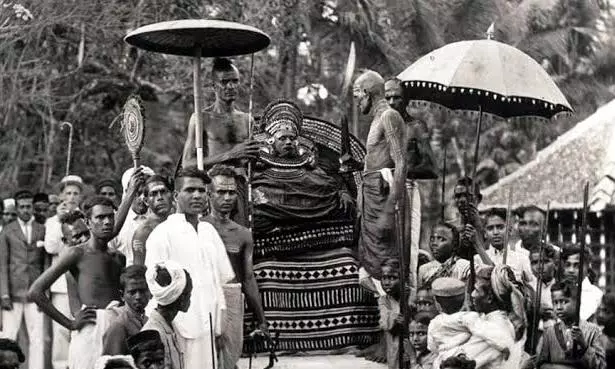
No north, south divide when it comes to genetic history, says CCMB researcher
Recent study claims that in past 4,000-5,000 years, North and South populations have migrated and mingled and now share genetic history

The highly-debated North-South divide in India is narrowing down, it seems. A recent study conducted by a team of researchers in Hyderabad exploring the history of Indian populations claims there is no distinct divide in the genetic history of North and South Indians.
In the most recent genetic study published by the Centre for Cellular and Molecular Biology (CCMB) in Hyderabad, it was revealed that the traditional warrior and feudal lords of Nairs, Thiyyas and Ezhavas from Kerala, and Bunts and Hoysalas from Karnataka in the South were “genetically closer” to populations of north-west India.
This study, which was published in the journal Genome Biology and Evolution, also showed that the Nairs and Thiyyas not only share ancestors with ancient migrants of north-west India but also carry enhanced Iranian ancestry. This may make them closer to Gujjar populations, who are found largely spread out across the north from Jammu to Maharashtra or the Kamboj, an agricultural community from the Punjab region of India and Pakistan.
No North vs South
According to the researchers, this finding puts an end to an ongoing "highly-debatable genetic history" of particular South Indian communities. Historians and written records had said earlier that they were related to migrants from Ahichhatra (Iron Age civilization) in the Gangetic plain, but others have said they were related to Indo-Scythian clan migrants from north-west India.
Talking about the importance of these new findings, K Thangaraj, JC Bose fellow, CCMB, Hyderabad told The Federal that these results show that in the last 4,000 or 5,000 years, North and South populations have migrated and mingled and share genetic history. “Clearly, there is no distinct divide between North and South India in terms of their genetic history,” he asserted.
K Thangaraj, JC Bose fellow, CCMB, Hyderabad
Does this mean these South populations are not completely Dravidian? “I would say very approximately these communities carry 75 per cent of Dravidian ancestry, 20 per cent of north-west Indian ancestry and 5 per cent Iranian," said Thangaraj. "Let me point out that what they carry genetically is the real thing and cannot be disputed in any way.”
High genetic diversity
Thangaraj and his team have been researching Indian population history since 1993. Their first study on how Andamanese were the first humans to migrate 65,000 years ago to settle in the Andaman Islands and some in South India have not been disproved till date.
For the CCMB team, India’s south-west coast region is of interest since it holds “high genetic and cultural diversity” resulting from millennia of migration, settlements and mixing of human populations. In an earlier study too, researchers found the recent migration of Jews, Parsis and Roman Catholics, led to a rich genetic heritage in this region.
Their most recent study on Nairs, Thiyyas and Ezhavas from Kerala, and Bunts and Hoysalas from Karnataka started three years ago.
A Bunt wedding in progress: This community from Karnataka was found to be “genetically closer” to populations of north-west India. Pic: CCMB
The DNA of 213 individuals of traditional warriors and feudal lord communities from south-west coast of India was analysed. The researchers “looked for genome-wide autosomal markers and maternally inherited mitochondrial DNA markers”, and compared their results with ancient and contemporary Eurasian populations ranging from the Bronze age to present day groups.
Route and age of migration
According to author Dr Lomous Kumar, the migration of these groups happened from north-west via central india to the south-west during the late Bronze age or probably Iron age. Kumar is the first author of the study, who was a PhD student of CCMB at that time and presently is at the Birbal Sahni Institute of Palaeosciences, Lucknow.
Meanwhile, Dr Vinay K Nadicoori, CCMB Director, believes that this study suggests that these south-west coastal groups are the “remnants of very early migrations” that happened from north-west India. They had probably followed the Godavari basin route to Karnataka and Kerala, he pointed out.
Thangaraj also brought in another point that the maternal genome of these South populations reflected higher distribution of West Eurasian mitochondrial lineages. This, according to him, meant that this was a “female-mediated migration” (females from north-west also migrated), unlike most of the recent migrant groups such as Siddis, who came from Africa to India 400 years back and were predominantly males.

